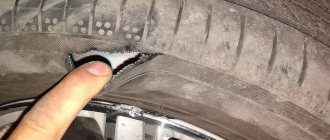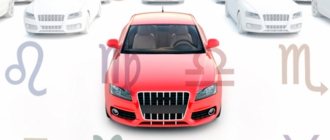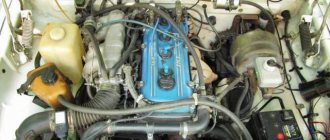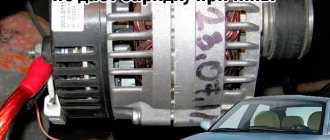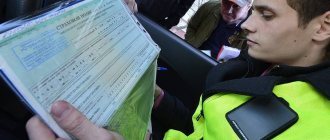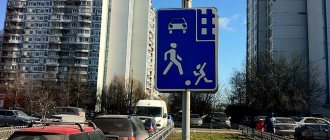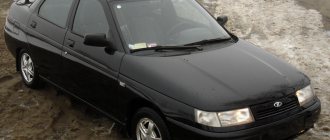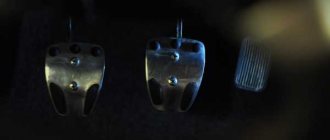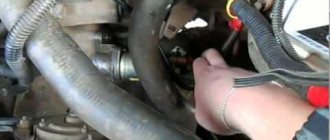Deliberate set-ups on the roads are, unfortunately, not the inventions of scriptwriters and television programmers, but a reality of the modern world.
Every day in Russia, about a thousand drivers fall into the traps of scammers who stage road accidents and make unsuspecting law-abiding drivers guilty. Automatic fraud is a situation on the road in the form of a staged accident, which is specially created by scammers. You find yourself “to blame” in this situation. Fraudsters begin to offer to negotiate on the spot and extort money from you in order to hide the fact of the accident and supposedly more severe consequences; all this may be accompanied by threats and obvious psychological pressure on the victim of the scam.
Who can become a victim of scams on the road?
In most cases, owners of relatively new middle-class cars, domestic or imported, become victims of roadside scams. This fact simply confirms that a person has money. Most often, only the driver is in the car without any unauthorized persons, since these are unnecessary witnesses who are absolutely useless. In addition, the absence of other people nearby at the time of the setup deprives the victim of additional psychological support; she becomes more suggestible and less confident in the correctness of her actions. It is clear that tinted expensive cars are unlikely to become victims of fraud, since there is no guarantee that a couple of aggressively minded comrades are not sitting behind the dark windows who will quickly restore justice using rather crude methods. The gender of the victim makes absolutely no difference; both men and women are at equal risk.
Automatic setup - what to do and how to avoid becoming a victim of scammers
The car stand itself represents an imitation of an accident with minor damage to someone else's car. The fact that the damage is minor serves as a reason to come to an agreement with the owner of the damaged car, pay him money and drive away without involving the police. That’s the whole point of a car scam on the roads – get the money and leave.
But this is quite difficult to do, and requires scammers to have good preparation, considerable acting skills and knowledge of the psychology of behavior of a potential source of money. It all starts with the choice of a future victim. A single driver is selected for this role, well dressed and driving a car from the middle price category. As a rule, such a person has cash on him.
Owners of prestigious foreign cars are not suitable; they will most likely call the appropriate specialists for help, but the organizers of the car setup do not need this. They won’t do it to owners of cheap cars either; there’s simply nothing to take from them.
How to find out who was framing it?
Most often, the suppliers drive quite prestigious brands of cars - Audi, BMW, Mercedes and so on. As a rule, these are two cars and two people, respectively. One creates the conditions for a setup, and the other is set up. Both cars are most often tinted, one or both license plates may be missing, or they may simply be in transit. The right front fender is wrinkled or poorly smelted. In 95% of cases, if the above signs are present, the cars were substituted. It is worth saying that despite the external gloss and beauty of the car, most often behind the facade there is a rather broken and not new car. All this is done in order to psychologically suppress the victim who has just “broken” or “damaged” an expensive car.
What machines are most often used for bases?
In most cases, these are old, cheap foreign cars, the repair of which is very expensive. The age of such cars exceeds 10 years. The most popular cars involved in such scams are: - Audi 80, 100 and even A6, but from the first years of production; — BMW 5 and BMW 7; — Chrysler Cirrus; — Honda CRX; - Mercedes are usually E-class (W124, W210), but sometimes they are S-class - the notorious W140. Essentially, these cars are cheap but still look pretty solid; — Mitsubishi Galant; — Saab 9000.
Types of auto stands
- Rollback. Most often, such a setup occurs in a traffic jam or at a traffic light. The car in front suddenly begins to roll towards you, making it impossible to avoid such a collision. And, as a rule, the one who was behind is to blame.
- Overtaking a car. A car overtakes you and suddenly turns to the right and stops. You drive into it by inertia. If you try to go to the right, then most likely, the car of your accomplice will also be waiting for you there - you were being framed.
- Give Way. The car driving behind you will constantly inform you about the need to give way to it - honk, flash its headlights, do some other annoying things. At some point, you decide to give in and turn right, where you will have a “collision” with another accomplice’s car, which was always somewhere nearby.
At the crossroads. Fraudsters are located on the main road before the intersection, so they will have priority passage, and wait for the car to appear to carry out the setup. As soon as a driver driving on a secondary road appears at an intersection, the scammers quickly and unexpectedly drive onto the central part of the road. The driver of another car in this situation most often does not even have time to brake and collides with the attacker’s car. Novice drivers most often fall for this type of setup. The presence of a DVR will easily resolve this situation, otherwise it will be quite difficult to prove anything, especially if the scammers “find” supposed witnesses to the accident.
- Box. Two scammer cars are located to your right and left. The car on your left will be driving as close to you as possible, while the other car will be in the blind spot. At some point you will simply have to turn right to avoid a collision, but there you will collide with another car.
- Pedestrian hit. While crossing, a person may suddenly rush under your wheels or onto your hood. Which may then show you bruised legs or arms, some other injuries or broken equipment. Nowadays, a setup without a “victim” at all is gaining popularity. To do this, scammers leave traces on your car in advance, at some point they catch up with you and begin to assure you that you caused the accident and fled the scene.
Even if you agree with the scammers (which you absolutely should not do) to pay on the spot, the scam may not end there. After some time, the scammers may bother you again with phone calls demanding that you pay extra money because you fled the scene.
How can you be framed?
Automatic setup schemes are regularly updated: sophisticated minds are hard at work on new ideas. However, there are several “classic” scams that every driver should be aware of.
Give Way
You are driving in the left lane. A car catches up with you from behind and starts honking or flashing its headlights - in a word, it demands to give way. You, like a polite driver, change lanes to the right, and then, out of nowhere, a car speeds along the right lane. A minor collision occurs, usually touching the sides.
Keep distance
Fraudsters can implement this scheme in different ways, but the result is the same - the collision occurs because you allegedly did not keep your distance. What might this look like?
Option one: they overtake you, cut you off and brake sharply; you drive into the rear bumper of a car.
Option two: you start from a traffic light, the car in front does the same, and suddenly it brakes sharply - a “kiss” is inevitable.
How to avoid setups on the road?
Paradoxically, all the advice on this topic is quite banal and simple. The first thing you should remember is that absolutely anything can happen on the road. And this should not drive you into panic and constant tension, nor should it unduly relax you, since through experience and skill you can get out of any situation.
Here are simple recommendations that will help you avoid getting caught on the roads:
- Follow the rules of behavior on the road - speed limit, distance, carefully monitor the situation on the road, do not be distracted by phone calls or writing messages while driving, then it will be quite difficult to set you up. The more confident you are on the road, the less likely it is that you will be chosen as a victim.
- Monitor the situation on the road. Substitutes never immediately go on the attack; they first take a closer look at the object and assess the likelihood of their own success.
- Look carefully in the mirrors; it’s not that difficult to figure out what the car was. In most domestic cars, standard mirrors do not provide the proper level of control over the situation on the road. Therefore, you should not spare money on buying better ones that will save you from dead spots while driving. You will save much more money, time and nerves if you do not become a victim of a scam.
- Keep your distance. In relation to the other car, you must be at such a distance that if you brake sharply, you will not cause an accident. The greater the distance, the more time you will have to react to unusual behavior on the road.
- Remain calm even if a car appears behind you, shining and flashing all its high/low or fog lights at you. According to traffic rules, you are obliged to give way only to special vehicles with flashing blue lights. In other cases, you should not be nervous, because it is not you who is in a hurry, but the other driver. In any case, it is better to follow the rules and possibly run into anger and insults from the window of a passing car than to become the culprit of an accident. Therefore, follow the rules and conduct all maneuvers on the road calmly and safely.
- Do not drive in the left lane if you can drive in the right lane, especially since traffic around the city is often faster there.
If you get into a set-up or an accident (and you don’t understand that it’s a set-up), then stay in place and don’t move, don’t move to the side, don’t agree to go to some “your” service, don’t give in to any persuasion. Call the traffic police and stay where you are. Remember that for leaving the scene of an accident you can lose your license for up to 1.5 years. Take your own photo or video from the scene of the accident. Follow the paperwork process carefully. If you suspect that the traffic police officers are in league with the “victim,” call and complain. Inform those present of your intention to write complaints to all possible authorities, including the Traffic Police Internal Security Service. By the way, carry with you all the telephone numbers of services that may be needed in an emergency - the main services, the district traffic police, the operational duty officer. Even the fact of calling the RUOP quickly calms down the attackers. If possible, tell your friends and relatives all the information about the car, the fact of the accident and other participants; if possible, contact your company’s security service.
- When communicating with the “victims”, behave naturally, there is no need to pretend to be tough and threaten with a showdown and your connections anywhere. Try to ignore threats and attempts to trick people into pity, playing “good cop and bad cop”; you must understand that this is just an attempt to exert psychological pressure.
- Remember that scammers may not always extort money; they may simply steal valuables or money from your car. Therefore, do not panic and block the doors every time you leave the salon. If you encounter aggression from participants in the conflict, then lock yourself in the car and call the police.
How to act in case of fraud?
You absolutely need to call the police, or rather, the RUBOP. Do not give in to intimidation and threats; it is advisable to record the position of the cars with a camera.
As a last resort, you can agree to the conditions of the scammers. Or rather, pretend that you agree. The main thing for you is to stall for time and call the police. Say, they called friends or relatives who are already traveling with money.
If possible, contact your insurance company. From your phone! There is no need to talk to anyone using a faker's phone. Most likely, you will communicate with the swindler's accomplices.
So, let's summarize. Be calm, try to look confident, call the police (RUBOP), contact the insurance company, record the license plates of the scammers’ cars, do not show or even hand over the car documents to the scammers. If the situation is critical, get into the car, lock the doors, turn on the hazard lights and press the horn. Then the scheme is standard - we call the police (RUBOP) and the insurance company.
Preventive measures and special recommendations
- Make sure you have good communication. Especially if you often travel outside the city or on the highway. Choose an operator that has good coverage in the areas where you plan to travel. Otherwise, you can find yourself in a very unpleasant situation, and now we are talking not only about auto setups. You may simply stall in some deserted place at night and be unable to call for help.
- Buy quality side mirrors and the necessary software. I have already spoken about this, I am simply emphasizing the importance of this contribution for your safety and comfort. The DVR will always help if a controversial situation arises. The same situation with a pedestrian on the hood can be proven quite easily with a simple video recording. The second recorder can be placed so that it records what is happening behind the car.
- Buy an MTPL policy. In 95% of cases, this will stop communicating with the scammers; they will simply not communicate with you any further. Even talking about how they need money right now is also a way of psychological manipulation. In any case, insist on your option: calling the traffic police, organizing an analysis team - the insurance company.
IMPORTANT: even if the scammers leave the crime scene, you should still call the traffic police, because your damage should also be recorded, and perhaps this will help find the framer.
Of course, even following all the recommendations does not guarantee that you will never encounter car accidents on the roads. But awareness of these issues will definitely allow you to reduce the risks of such a situation to a minimum.
How to make a car stand for insurance
If we slightly reformulate the question, it will sound like this: “How to get a sentence for fraud.” In general, there are quite a lot of schemes, but the main requirement for their implementation is the agreement of both participants in the alleged accident, or rather, the staging of such an accident. Expensive cars are used here, the payments for which are quite large. An independent expert usually estimates the damage much higher than the insurance company. Payments can be several times higher than the amount spent on restoring the car.
All of the above is relevant for cars insured under CASCO. Insurance companies fight such scammers in every possible way, add them to global blacklists, and after some time, a person with a bad reputation may simply be denied vehicle insurance.
There is also a scheme that excludes the owner of CASCO insurance from receiving funds, and therefore benefits. When concluding a contract, the “repair by direction” option is selected, and in this case, insurers send the car damaged in an accident to a service center, where it is repaired at the expense of the insurance company.
Framed collision with a pedestrian
Most often, a scenario involving a collision with a pedestrian plays out in a parking lot near a shopping center, when the driver backs up at low speed. A person suddenly throws himself under the wheels, eyewitnesses of the incident quickly gather around, among whom are those who are ready to testify in defense of the deceiver.
The scammer feigns unbearable pain and demands compensation for the harm caused. To add even more pressure, the “victim” may show a cracked smartphone or watch and demand compensation.
